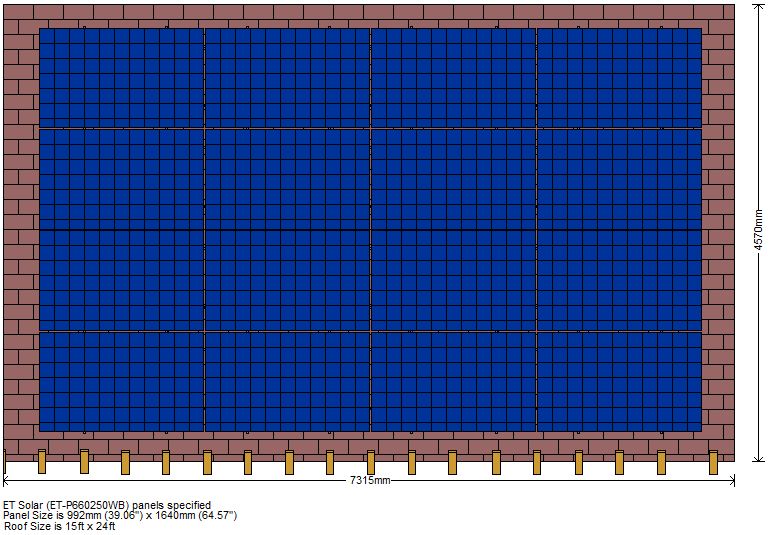There are a number of tools out there to help plan a PV installation. One of the most useful is the PVWATTS solar energy calculator.
PVWATTS uses nationally compiled solar survey data to estimate location specific energy production based on array efficiency, panel orientation, and tilt. In our case, the planned 1KW test array will generate about 1280KW/year with a fixed roof mount.

Of course, since this is an experimental system; my goal will be to develop a mounting system that allows periodic panel re-orientation to the seasonally adjusted sun angle. This “1-axis” tracking system will rotate the panels back and forth about 40 degrees throughout the year. Since the entire yearly rotation factor is only about 80 degrees, no costly mechanical engineering will be required. I’m thinking that I’ll be using either a u-bolt arrangement or a beam attachment with holes drilled through the center.
The energy gains from this simple design change are impressive however. As can be seen below, a 1-axis tilt system provides an energy output boost of about 20%. Not bad for a system that only needs to change panel tilt by a few degrees each month!
![]()
The plan to accomplish this will be to mount the panels in a “landscape” orientation so they can rotate around a horizontal mounting shaft that is anchored about three inches off the roof at every rafter. Since this will be the only anchor point for each 40 pound panel, it will need to withstand 90MPH wind gusts and 30″ of snow cover on its four connected panels.
I’m planning on an extended design/test cycle to solve this engineering challenge, so our initial mount plan will be to use the Renusol VS fixed mounting system and orient some of the anchor points at the middle of each panel to facilitate a future upgrade once the rotational system has been appropriately tested and qualified.
The array location will be our south facing garage roof. As can be seen in the picture below, it provides 15ft by 24ft of uninterrupted space that is perfectly sized for a four by four landscape array.
While its 160 degree orientation isn’t optimal, the roof itself is re-enforced by a large structural support beam that was added to facilitate overhead storage in the garage. This feature is also a bit of good fortune for us since the weight of our final 4KW installation will exceed 800 pounds.
The roof area is just about completely unshaded too which is critically important to a PV solar system. In fact, most rebates and incentives for Solar Energy production specify that the location can have no more than a 10% shading factor.
Here’s the overhead CAD view for the final 4KW installation:
It’s pretty easy to see why solar panels now use pretty much standard dimensions of 40″ x 64.5″ since this lines up almost perfectly with 16″ oc rafters. There will be two vertical mounting rails per four panel group that will each support about a third of the combined array weight. Our initial installation will build out the leftmost panel group.
WE energies, our electric service provider, requires a 2 meter system to run our grid tie array. They will net the difference between the readings and pay us about 4 cents per KW if we generate more than we use. This will be credited towards next month’s bill. If, at the end of a yearly period ending in May, we still have a net credit then they will send us a check. However, we will only qualify for the program if we can submit data showing that this isn’t likely. Acceptable proof will be last year’s energy data and our PVWATT estimate. WE energies also requires a 300,000 dollar liability insurance policy against potential grid damage caused by our generation facility with a current certificate of insurance on file at their offices. I checked with our home insurance provider and they stated that the liability clause of our standard home policy covers this hazard. All I need to do is inform them where to send the certificate and they said they would take care of the rest. Nice!
So how’s the construction cost factor looking? Our initial estimate for the fully installed 1KW system is about 5-6K. We will be eligible for a 30% federal tax rebate along with a $600/KW rebate from the Wisconsin focus on Energy program. Based on this, I just may decide to start with a 2KW system since the rebate check will pretty much pay for the next four panels….
Our next milestone is May 31st when we meet with the contractor to discuss installation details. Stay tuned!


